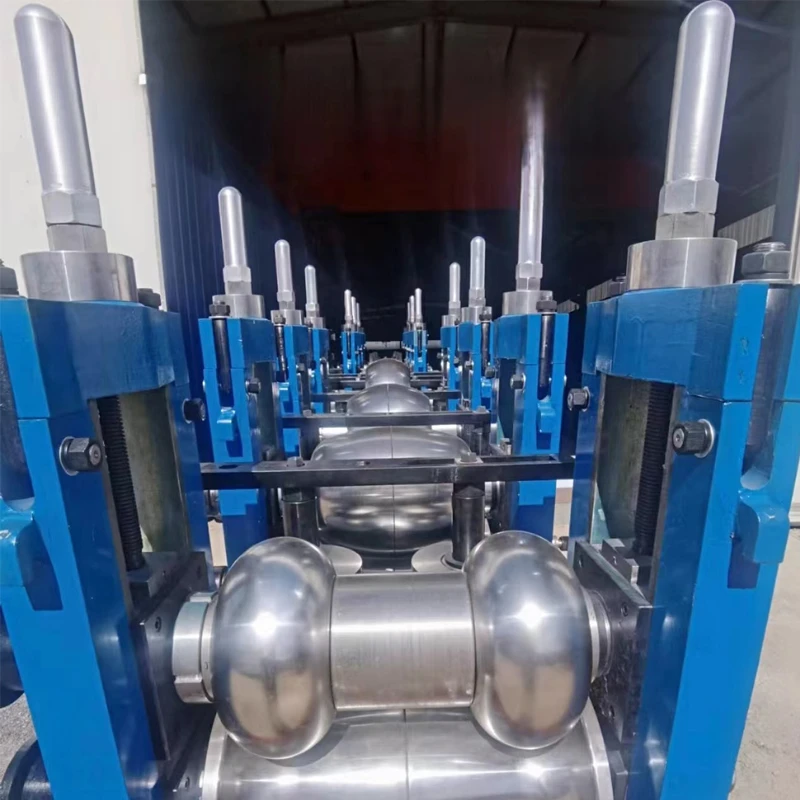Telescopic Channel Production Equipment for Efficient Manufacturing Processes
Innovations in Telescopic Channel Making Machines
The manufacturing industry continually evolves, driven by the need for efficiency, precision, and quality. One particularly fascinating advancement in this arena is the telescopic channel making machine. These machines have revolutionized the production of telescopic channels—components widely used in construction, automotive, and various other industrial applications. In this article, we will explore the workings, advantages, and significance of telescopic channel making machines.
Understanding Telescopic Channels
Telescopic channels are structural components that allow for adjustable lengths, providing flexibility in various applications. Typically used for supports, frames, and guides, these channels enable users to modify dimensions without requiring separate components. This adjustability is particularly advantageous in industries where space constraints are a concern, such as in vehicle manufacturing or construction scaffolding.
The Mechanics of Telescopic Channel Making Machines
A telescopic channel making machine is specialized equipment designed to manufacture these channels with precision and efficiency. The process begins with raw materials, usually steel or aluminum strips, which are fed into the machine. The machine then employs a series of operations including cutting, bending, and welding, to produce the final product.
1. Feeding and Cutting The raw material is carefully unraveled and fed into the machine. Automated cutting tools adjust the lengths of material, ensuring minimal waste and optimal sizing based on the specific needs of the customer.
2. Bending After cutting, the material moves to the bending station, where it is shaped into the required channel form. This process can be highly automated, employing programmable logic controllers (PLCs) to achieve precise angles and curves.
3. Welding and Assembly Once the components are shaped, they are welded together to form the final telescopic channel. Modern machines utilize advanced welding techniques, such as laser or MIG welding, to ensure strong, durable seams that can withstand significant stress.
4. Finishing Touches The final step often includes surface treatment processes like powder coating or galvanization, which not only enhance the aesthetic appeal but also protect against corrosion and wear.
telescopic channel making machine

Advantages of Telescopic Channel Making Machines
1. Increased Efficiency Automated telescopic channel making machines can operate at high speeds, significantly reducing production times. This increased efficiency translates to quicker turnaround times for manufacturers, enabling them to meet growing demand without sacrificing quality.
2. Precision Engineering These machines are designed to deliver high levels of precision in the dimensions of the channels produced. The use of advanced technology ensures that each product adheres to stringent quality standards, reducing the likelihood of defects and rework.
3. Customization Potential Manufacturers can program these machines to produce tailored designs, allowing for a wide variety of channel sizes and configurations. This versatility supports diverse industries, meeting specific customer requirements effectively.
4. Cost-Effectiveness While the initial investment in a telescopic channel making machine may be significant, the long-term savings through reduced labor costs, decreased material waste, and improved production speeds often justify the expenditure.
The Significance in Modern Manufacturing
The relevance of telescopic channel making machines within the manufacturing sector cannot be overstated. As industries face increasing pressure to optimize operations and respond rapidly to market demands, the capabilities of these machines position manufacturers to remain competitive.
Moreover, their adaptability serves the growing trend towards custom fabrication. With clients demanding unique solutions to specific problems, the ability to quickly adjust production lines for varied telescopic channel designs is invaluable.
In conclusion, telescopic channel making machines represent a pivotal development in modern manufacturing. By combining automation with precision engineering, they enhance productivity, ensure quality, and cater to an ever-evolving landscape of consumer needs. As technology continues to advance, we can expect these machines to undergo further innovations, further solidifying their role in the future of manufacturing. As businesses strive for efficiency and adaptability, the telescopic channel making machine stands out as a key player in their success story.
-
High Frequency Straight Seam Welded Pipe Production Line|BzZhou Xinghua|Precision Welding&EfficiencyNewsJul.30,2025
-
High Frequency Straight Seam Welded Pipe Production Line - BzZhou Xinghua|Precision Engineering&EfficiencyNewsJul.30,2025
-
High-Frequency Straight Seam Welded Pipe Production Line-BzZhou Xinghua Machinery Equipment Manufacturing Co., LTD.NewsJul.30,2025
-
High-Frequency Straight Seam Welded Pipe Production Line-BzZhou Xinghua Machinery Equipment Manufacturing Co., LTD.|Precision Manufacturing, High EfficiencyNewsJul.30,2025
-
High Frequency Straight Seam Welded Pipe Production Line-BzZhou Xinghua Machinery Equipment Manufacturing Co., LTD.|Precision Steel Pipe Manufacturing&Industrial EfficiencyNewsJul.29,2025
-
High-Frequency Straight Seam Welded Pipe Production Line-BzZhou Xinghua Machinery Equipment Manufacturing Co., LTD.|Precision Steel Pipe Manufacturing&Industrial EfficiencyNewsJul.29,2025


